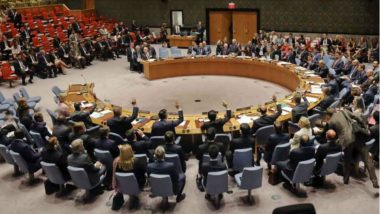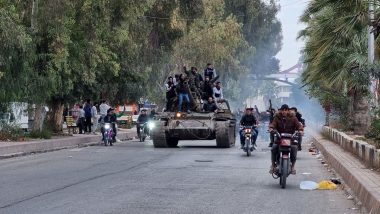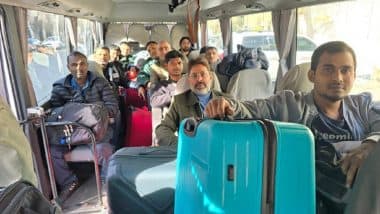After a week of air raids and bombing in Syria’s North East district of Ghouta, the United Nations Security Council unanimously called for an immediate ceasefire in the region. The recent spate of Syrian government’s offensive has claimed 500 lives in a week of which at least 120 have been children. After Aleppo, once again scenes of people being pulled from the rubble of buildings and wounded children wailing for their mothers is splashing across our television screens.
United Nations Secretary-General Antonio Guterres issued a statement welcoming the resolution’s adoption, stressing his expectation that “the resolution will be immediately implemented and sustained, particularly to ensure the immediate, safe, unimpeded and sustained delivery of humanitarian aid and services, the evacuation of the critically sick and wounded and the alleviation of the suffering of the Syrian people.”
It remains to be seen what impact the resolution will have in Eastern Ghouta which has been described alternately as an ‘epicenter of human suffering’ and ‘unparalleled suffering on earth’. U.S.’s representative to the UN, Nikki Haley said the U.S. was “deeply sceptical if the Syrian regime will comply” with the ceasefire and called on Russia to pressure Assad’s forces to respect it. This skepticism stems from the fact that Russia, which is pro-Syrian government in the conflict, insisted that actions against the so-called Islamic State, Al Qaeda and Al Nusra Front will continue.
Al-Ghouta In The Civil War
The Eastern Ghouta part of the original Ghouta i.e. oasis created by the River Barada which gave rise to Syria’s capital of Damascus has been inhabited for thousands of years. Before the civil war began in 2012, this area was home to two million people. As the protests against Bashar Al-Assad spread across the country, the people of Eastern Ghouta chose to fight against him. The residents of the area ousted Assad’s forces in November 2012 and since then it has been a rebel-held area. The Syrian government forces attacked and laid a siege to Eastern Ghouta in 2013 and it continues to the day.
Assad seems to have retrained his focus on reclaiming Eastern Ghouta, an area spread over 80 kilometres and a half hour’s drive from Damascus. In the past week, the Syrian government has been accused of using improvised weapons with explosives, barrel bombs, shrapnel on homes in Eastern Ghouta.
The siege of Eastern Ghouta which is now in its fifth year is one of the longest such blockades in modern history. Eastern Ghouta has been subject to starvation tactics by the Syrian regime forces with UNICEF estimating that at least 12% of children under 5 years of age in the enclave are acutely malnourished. The international media now says that reporters have run out of words to describe the horror and suffering of the people in the enclave.
Eastern Ghouta was one the first enclaves to have suffered a chemical bomb attack in 2013. In the Sarin gas attack of 2013, the estimate of people killed ranges from 300 to close to 2000 people. This was the deadliest use of chemical weapons since the Iran-Iraq war of 1980. The images coming out of Ghouta shocked the world and mobilized the U.S. government which authorized the use of military force against the Syrian military in response to the Ghouta attack. The Syrian government under threat of attack from the U.S. was forced to agree to turn over its chemical weapons stockpile for destruction and to join the Chemical Weapons convention.
With the help of Russian forces as well as Iran’s Quds forces and support from Hizbullah militia, the Syrian regime since 2013 has regained control of major cities and areas around Damascus, Aleppo, Palmyra, Homs and Deir Az Zor.
The savage attacks mounted on Eastern Ghouta shows Assad means to demolish the last remaining pockets of resistance against him. Even after the call for the ceasefire, reports came of a few regime fronted attacks so it remains to be seen if the ceasefire will be adhered to in letter and spirit as emergency aid is transported to the area. Since March 2011, fighting in Syria has killed an estimated 465,000 Syrians, wounded one million more and forced about 12 million people - or half the country’s pre-war population - from their homes.
The fate of the people of Eastern Ghouta remains extremely precarious as the international community is unwilling to put boots on the ground or send air attacks to confront the barbarity of Assad’s forces against its own people. Unless the Assad government is confronted with an alternative that is not supported by Russia or Iran, the end to the resistance in Eastern Ghouta is fated to follow the same deadly path as Aleppo, Homs and Idlib before it.
(The above story first appeared on LatestLY on Feb 25, 2018 12:44 PM IST. For more news and updates on politics, world, sports, entertainment and lifestyle, log on to our website latestly.com).


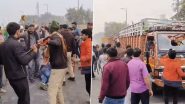







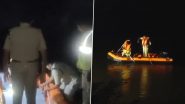


 Quickly
Quickly








